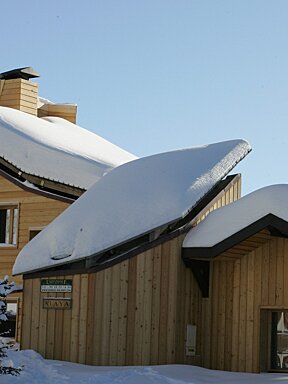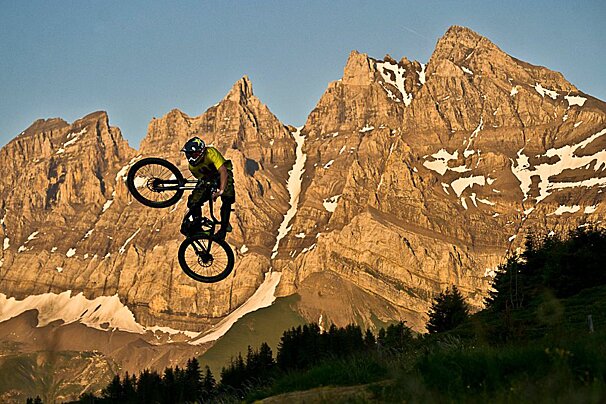
© SeeMeribel.com

Mastering moguls
Get the most out of the bumps
Skiing bumps (moguls) is one of the most demanding aspects of all mountain skiing, yet it is one of the most exciting and satisfying when done well.
Skiing bumps is almost a lost art (very popular in the '80s) as the modern-day focus on carving has taken away the emphasis of bashing the bumps. Indeed some National Instructor Training organisations such as the French (ENSA) do not even include bump skiing as part of their syllabus.
The following article looks at three aspects for skiing the bumps well as follows:
- technique – using the right input
- how to approach the bumps – getting the line right
- mental toughness – hang in there and attack!
1. Technique – using the right input
Using the right input focuses on three important skills to help you ski the bumps effectively:
- narrow stance
- leg absorption
- leg stretching
Narrow stance
Skiing bumps is easier with a narrow stance. With the development of skis over the last 10-15 years, a more open stance has been widely promoted. This is certainly effective for piste skiing where high edge angles are used to gain maximum performance from your skis.
However, when skiing bumps a narrow stance is more effective because it allows you to negotiate the terrain more easily and is certainly more preferable than having one ski on a bump while the other is in a trough. It's also a choice between stability and agility.
A wide stance certainly promotes stability while a narrow stance allows for quicker and more responsive movements, which are a key aspect of skiing through a mogul field. To ski a fall line run down the bumps requires fast reactions and movements and a narrow stance is definitely helpful in achieving this.
Leg Absorption
One of the key movements involved in skiing bumps is the ability to absorb with your legs.
You need to involve all the key joints; ankles, knees and hips but the major movements come from the knees and the hips. Your legs must in effect fold in front of you with your feet slightly ahead as you approach or ski into the bump.
If your feet get behind you at this point you are likely to break forward from the waist and this will block your ability to use your legs properly and compromise your balance.
Leg Stretching
Absorption is crucially important but so is your ability to then stretch your legs as you come over the bump or ski into the rut. The goal here is to maintain snow contact.
Therefore you need to push the tips of the skis down and engage the front of the skis as the terrain changes and falls away.
2. How to approach the bumps – getting the line right
There is no absolute right or wrong way, but different approaches can be used depending on the speed you wish to go (or are capable of going). And depending on how steep the terrain is or how big or small the bumps are. The following are all approaches you can use to suit these variables:
- skiing the ruts
- using the bumps to control speed
- playing with terrain – varying the route
Skiing the ruts
Probably the fastest way down giving you the most direct line. This is where quick reactions and fast feet are required.
Using the bumps to control speed
Ideal for steeper terrain and bigger bumps, but requires a big range of movement in the legs both for absorbing and stretching. It also requires great discipline with the upper body so that you avoid breaking forward from the waist.
Playing with terrain – varying the route
As your skill level improves you can start to vary your line within the same run mixing up your speed, your line and even taking a little air.
3. Mental toughness – hang in there and attack!
Skiing bumps tests every aspect of your skiing - mentally, physically, technically and tactically. But there is a strong link between your mental toughness and your physical endurance. To help with this consider the following aspects:
- stay focused – use imagery
- hang in there – endurance
- attack – ski with flair
Stay focused – use imagery
It’s a good idea to pause before the start of each run and look at the route you want to take. Work out where your first three to four turns are going to be by seeing where you are going to place your feet. Then close your eyes and see the run as you ski it trying to feel the sensations associated with the run.
This is known as mental rehearsal and helps set you up for success.
Hang in there – endurance
Skiing bumps is physically demanding and takes practice. Start with short sections ensuring that there is “quality” about your performance. Then gradually try to increase the length of the runs you ski, accepting that there may be some mistakes, but push yourself to keep going.
Attack – ski with flair!
Finally, imagine that you are performing for an audience (or indeed ski some bumps near a ski lift), so that you can show them what you can do.
Article courtesy of Derek Tate, Director, British Alpine Ski & Snowboard School Chamonix.





























